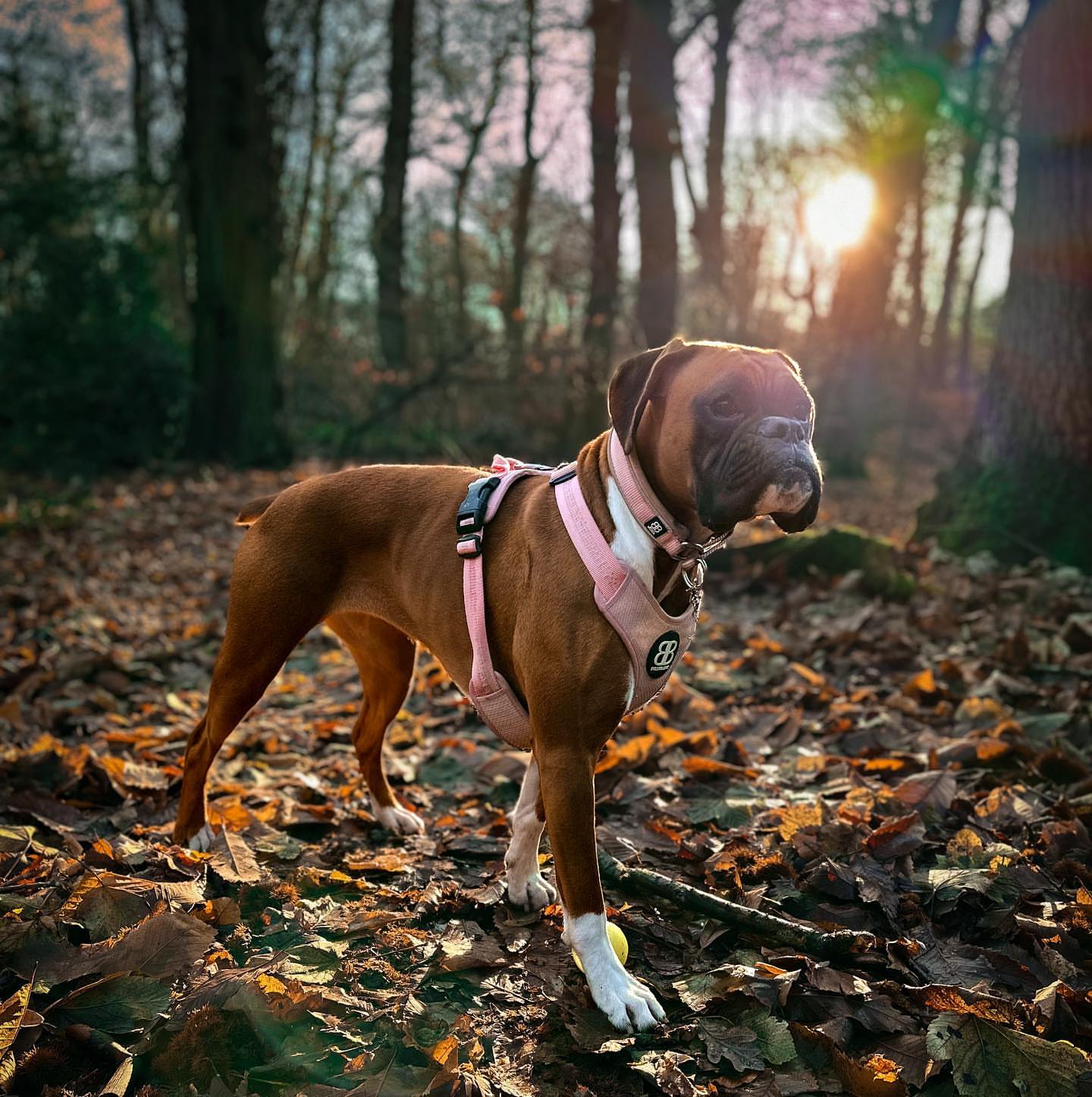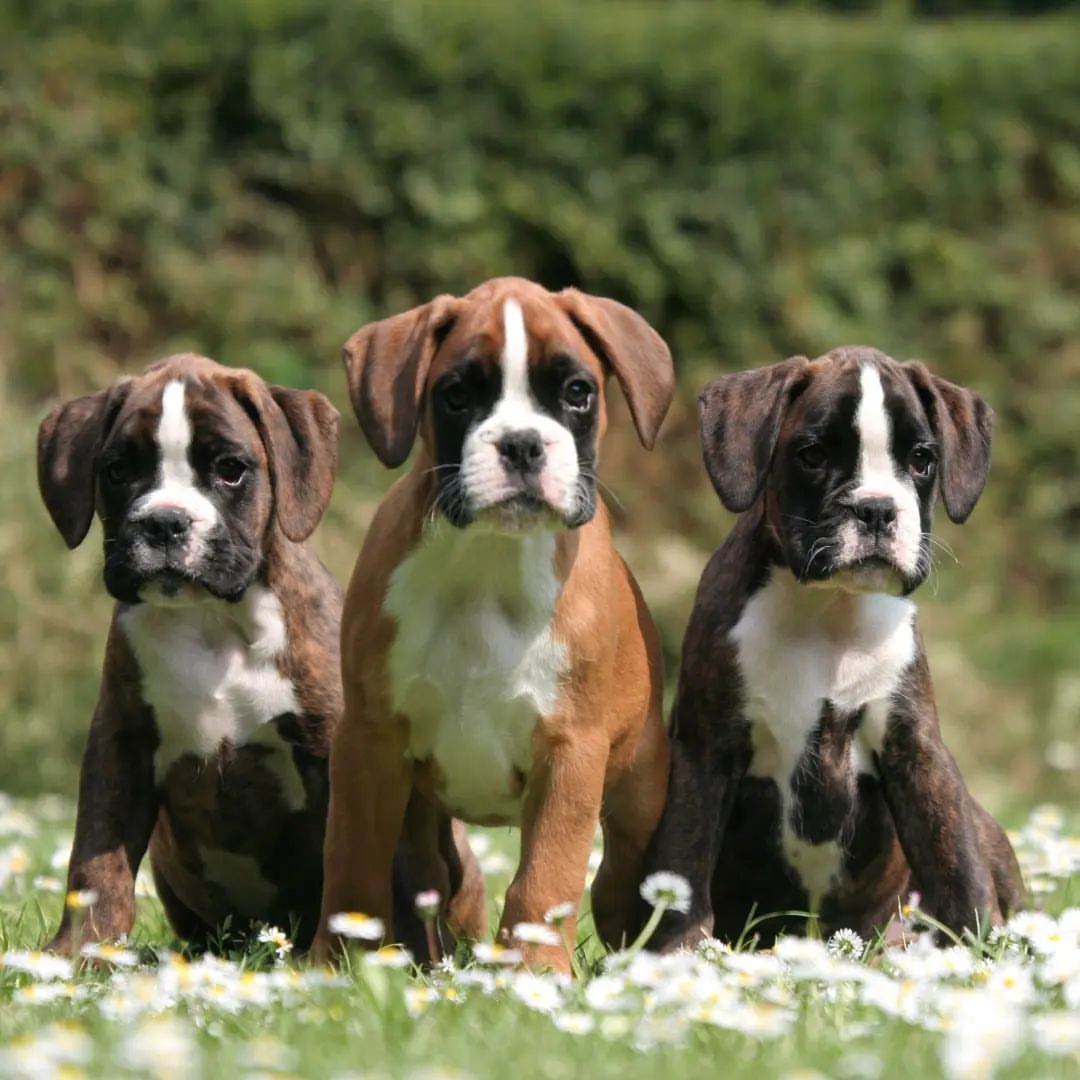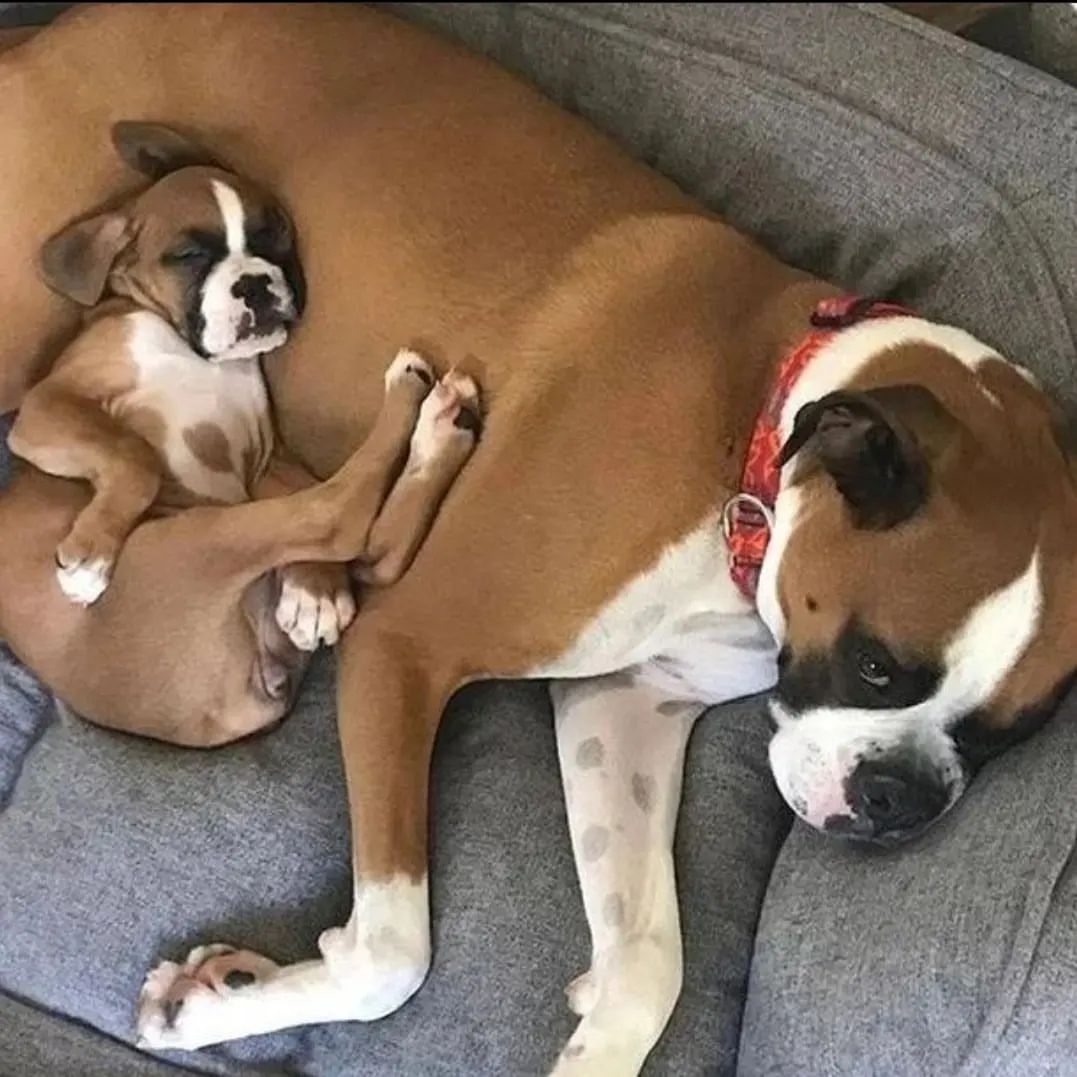Boxers are adorable, fun-loving, athletic dogs that are affectionate and loyal. The Boxer was originally bred for big-game hunting and is a medium-sized to large dog. They are good with children and can be excellent watchdogs. Also, they are one of America’s most beloved dog breeds. Their longest tongue is a hallmark. It is crucial to know when your Boxer growth stages. This will allow you to prepare for their different developmental stages.

Boxers are a medium-sized breed of dog and belong to the Working group. This means that they were bred for helping humans.
Boxers can be listed in the Brachycephalic breeds. They tend to have a cesarean birth, but most Boxers are born naturally, unlike Boston Terriers, Pugs, and French Bulldogs.
You may like: Why does my dog keep stretching his back legs?
Boxer Size Chart
Below is the Boxer size and weight chart. It shows you how much your Boxer should weigh and size from birth to adulthood. From the birth weight, the expected weight is calculated.
Boxers born at a higher weight than their counterparts will likely be expected to gain more weight over time.
The boxer size chart can be used to track your dog’s progress and is a great way to make sure he is growing as he should.
It is vital to keep track of the dog’s weight. This can be a sign of their health.
It is important to remember that boxer growth and development may differ from the expected weight on the chart. If this is the case it is not necessarily cause for concern.
While boxer growth is generally predicted between birth and 18 months, every puppy will develop independently.
When using the boxer growth chart, this should be taken into consideration.
If your Boxer is significantly heavier than expected, you should contact your vet immediately.
|
Boxer Growth Chart |
||
| AGE |
HEIGHT |
WEIGHT |
|
8 weeks |
7 inches |
13 – 18 pounds |
|
10 weeks |
10 inches |
22 – 24 pounds |
| 12 weeks |
12 inches |
26 pounds |
|
4 months |
14 inches | 29 – 33 pounds |
| 5 months |
15 – 16 inches |
36 – 38 pounds |
|
6 months |
17 – 18 inches | 42 – 45 pounds |
|
7 months |
18 – 20 inches | 47 – 52 pounds |
| 8 months | 19 – 21 inches |
51 – 54 pounds |
| 9 months | 21 – 22 inches |
56 – 57 pounds |
| 10 months | 22 – 23 inches |
56 – 59 pounds |
|
12 months |
23 – 24 inches |
57 – 63 pounds |
| 24 months | 23 – 24 inches |
60 – 65 pounds |
What is the socialization stage?
This stage is crucial for socialization. It is also the time when a puppy experiences rapid development.
Highlights of the socialization stage include:
Play is important for puppies as they become more aware of their environment. This happens between 3 and 5 weeks.
Puppy’s learn to control their bladder and bowel movements from weeks 3-4. They learn to get up from their beds and go to the bathroom.
Puppy social skills include play, interaction with littermates and inhibited biting. Puppies learn these skills from 4 to 6 weeks . The puppies also learn how to communicate with other dogs, and develop physical coordination.
Puppy’s begin to form emotional bonds and attachments with their family members as early as the fourth week. This is a great time to get to know your pup.
A puppy’s development of curiosity and exploration is possible by positive interaction between humans. It can take from 5 to 7 weeks.
Puppies should be vaccinated between 6 and 8 weeks (source: American Kennel Club).
By week 8 puppies have been weaned from their mother’s milk. They can now eat solid foods. Once they are fully weaned, puppies can leave their canine family to go to their new homes.
Puppy can be house-trained within 7 to 9 weeks. Puppies can learn basic commands at 9-12 weeks of age and then start to focus on people (their parents).
When is a Boxer fully grown?
Boxers are a large dog breed that is medium to large in size. They take longer to grow and reach their full potential than smaller breeds. Your Boxer should grow to 18-24 months of age. This is an estimation, so there will always be exceptions.
You may like: Can dogs eat Grits?
What size is a fully grown Boxer?
The American Kennel Club Official Boxer Standard states that a fully grown male Boxer will be approximately 23 to 25 inches tall and a female Boxer about 21.5 to 23.5 inches. A mature male Boxer will be 60-70 pounds and their female counterparts will be 55-65 pounds.

How to properly Weigh and Measure a Boxer?
It is essential to keep track of your puppy’s weight to ensure it grows on the right path.
You can weigh your dog at home if your puppy is not big enough or strong enough. Start by weighing yourself. Then, take note of the results. Next, take your puppy to the scale. The difference in these two weights determines your puppy’s weight. If your puppy grows larger, it is possible to take your puppy to the vet to have him weighed.
When my Boxer is an adult dog?
Smaller breeds tend to mature faster than larger breeds, but larger breeds may take longer to reach emotional and physical maturity. Boxers are a medium-sized breed.
Expect some puppy hijinks (mischievous, playful, or rowdy activities) and bursts to energy. Boxers are athletic and playful.
The final development stage is called adolescence.
Between 6 and 12 months old: Puppies reach sexual maturity which is before they reach physical maturity.
- When they turn 6-9 months old, female boxers enter their first heat cycle. They can then get pregnant.
- However, male Boxers usually reach full reproductive capacity when they are 6-12 months old.
12-18 months old: While some Boxers may stop growing at 18 months, many Boxers will still continue to grow in weight and/or size until they turn two years.
24 Months old: Boxers become adults when they reach 2 years of age and are able to maintain their full height.
They will become seniors once they reach adulthood. At 7 to 8 years of age, a Boxer dog is considered a senior. According to AKC’s breed standards, a Boxer’s lifespan is estimated to be between 10 and 12 years.
You may like: Lavender Pomeranian
Factors that Influence Size and Growth Potential
Your Boxer’s weight can be affected by three factors. You can control some of these factors, but you can take action.

Show Dogs
in competing in dog shows. Crufts is one example. You will often see boxers on Crufts. Show dogs are usually smaller than non-show dogs. You must choose the right breeder to ensure you get a larger boxer dog and a healthy body.
Canine Health
Boxers who are smaller than the average due to two primary health problems are most likely to be boxers. This breed may have a lower level of growth hormones. They may also inherit a condition called dog dwarfism. A damaged pituitary gland is usually responsible for low growth hormones.
Their growth will be slowed as a result. These health problems can cause low levels of growth hormones:
- Infected gland
- The gland is home to cysts
- Not enough development of the pituitary gland
- Tumors
Low growth hormone is not a common problem in boxers but is quite common in other breeds such as the Miniature Pinscher or the Spitz. It is possible, but it is something you should be aware of.
Environment, Care, and Diet
As the dog owner, your main responsibility is to make sure your dog has everything they need. It is essential to give them the best care and environment possible, as well as a nutritious diet.
Concerning their care, once a dog has reached a certain height and weight, the growth plates will fully close once they reach 18 months. You should not exercise your Boxer beyond their growth plates. You should limit their activity during the first stages of their lives.
However, they still need to exercise and some activities should be done. Begin slowly and take shorter walks, and increase the time as they get older. Your vet can give you advice on how much activity your pet needs at each stage in their lives.

You must provide them with a comfortable place to sleep. For optimal growth and development, sleep is essential. Your dog should not be disturbed when they’re asleep. Also, You should make sure they get only the best dry food and avoid any unhealthy fillers.
Limiting how much food you give your pets and not feeding them too much is essential. Due to limitations in activity, excess weight can be hard to lose, particularly in the early years.





